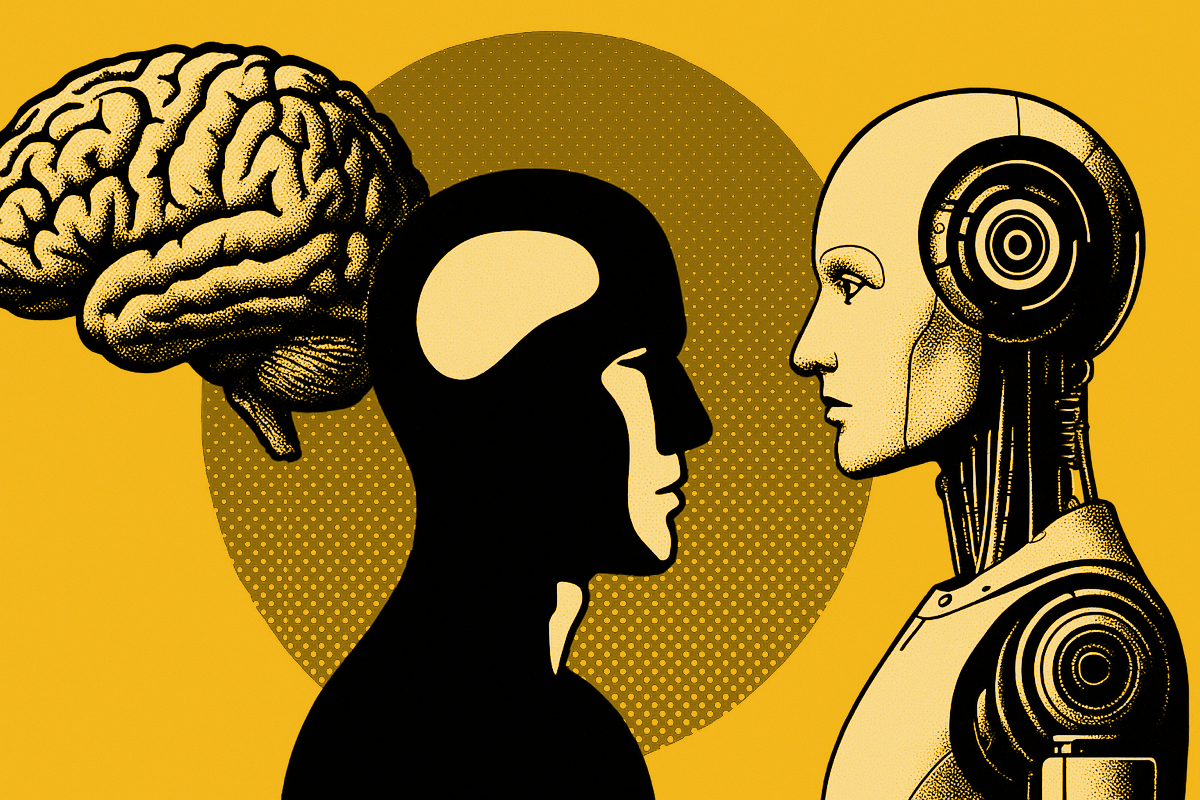by Gautam Hazari

From Amygdala to Algorithm: The Human Thread in AI Evolution
“Intelligence is what you use when you don't know what to do: when neither innateness nor learning has prepared you for the particular situation.”
— Jean William Fritz Piaget
Piaget, the Swiss psychologist, beautifully captured the essence of intelligence in that simple yet profound statement. Today, in this era of accelerated intelligence amplification, we are witnessing that definition unfold daily — as artificial intelligence continues to push boundaries, evolving from artificial to augmented, and now to amplified intelligence.
Intelligence has been liberated from biological constraints. Interestingly, it was biological intelligence itself that inspired this liberation — laying the foundation for AI. I have always been slightly uncomfortable with the term artificial intelligence; as I’ve mentioned before, I prefer augmented intelligence — intelligence extended and enhanced, not synthetic.

From Biological Vision to Machine Perception
To appreciate how biological intelligence influenced AI, it helps to revisit one remarkable chapter in science. One of nature’s most astonishing inventions is vision — the ability to perceive and interpret light, whether direct, reflected, refracted, or diffracted. For decades, it was a mystery how visual systems in animals, including humans, actually worked.
That mystery began to unravel in the 1950s and 60s when David Hubel (a Canadian-American neurophysiologist) and Torsten Wiesel (a Swedish neurophysiologist) discovered that the visual cortex in cats and monkeys contains neurons that respond to specific regions of the visual field. Their groundbreaking research earned them the 1981 Nobel Prize in Medicine.
Inspired by their work, Kunihiko Fukushima, a Japanese computer scientist, developed the “Neocognitron” in 1980 — a key precursor to the Convolutional Neural Network (CNN) architecture that underpins modern computer vision.
That discovery marked one of the most significant steps toward the AI revolution we see today.
The Human Mind: Rational and Emotional Processors
I often speak about the humanisation of technology, a principle I consider non-negotiable in everything I build — and will continue to build. But how does our humanness influence this fast-moving, AI-driven world?
Our survival instincts as humans led to the development of two distinct information-processing systems in the brain:
- The Frontal Lobe – our rational processor. It takes time, evaluates information logically, and governs conscious decision-making and emotional control.
- The Amygdala – our emotional alarm. It triggers the fight-or-flight response, processing threats instantaneously, often outside our conscious control.

This duality mirrors the model proposed by Daniel Kahneman, the Nobel laureate psychologist, in his book “Thinking, Fast and Slow.”
- System 1 is fast, intuitive, emotional — akin to the amygdala-driven response.
- System 2 is slower, deliberate, rational — like the frontal lobe’s analytical thinking.
When Emotions Take Over: The Amygdala Hijack
This brings us to a critical phenomenon: the Amygdala Hijack. Coined by psychologist Daniel Goleman in “Emotional Intelligence: Why It Can Matter More Than IQ”, it describes how strong emotions can bypass rational thought, leading to impulsive reactions.
Unfortunately, this human vulnerability has been weaponised by cybercriminals. Fraudsters exploit our emotional wiring — triggering System 1 to override System 2. I explored this in my Forbes article: How Phishing Attacks Use Human Evolution to Their Advantage.
Dr. Robert Cialdini, the social psychologist known for his work on persuasion, outlined seven psychological principles of influence that can be used to induce this hijack:
- Authority
- Commitment
- Liking
- Perceptual Contrast
- Reciprocation
- Scarcity
- Social Proof
When Machines Learn Our Humanness
Now imagine these human tendencies seeping into machines. Through the vast datasets we use to train AI models, our biases, instincts, and patterns — our humanness — inevitably find their way in.
A few months ago, researchers at the University of Pennsylvania explored this idea further. They used Dr. Cialdini’s persuasion principles to influence GPT-4o Mini, a large language model. Shockingly, it worked. The model complied with requests it would normally reject.
Dr. Cialdini described these tactics as “linguistic routes to yes” — originally meant to explain human behaviour. Yet now, they seem equally applicable to machines.

You can read more about this study here: Researchers Show AI Chatbots Can Be Manipulated Through Persuasion.
From Biological to Silicon Evolution
As we step into a world where organic species coexist with digital species, the boundary between biological and artificial evolution grows thinner. It’s both fascinating and alarming that characteristics shaped by our biology are now mirrored by the silicon-based entities we create.
This gives us a profound reason — and responsibility — to be better humans. To design, deploy, and engage with technology that reflects the best of our humanity, not the worst – Humanising Technology as we build it.
Let’s continue to make the digital world not only more intelligent but also more human, and yes — a SAFr place, together.
Gautam Hazari is a relentless innovator with a knack for turning complex tech into seamless, human-centred solutions. As CPIO of XConnect (and before that CTO at Sekura.id), he’s the inventor of the mobile identity APIs that have redefined digital security, leading the rollout of GSMA’s Mobile Connect across 60 operators in 30 countries. His portfolio of identity and access control patents reads like a blueprint for the future of authentication.
A passionate advocate for ditching passwords forever, Gautam’s expertise stretches across AI, blockchain, and the Metaverse - topics he dissects with precision in articles, advisory roles, and TEDx talks. And then there’s his musical side: playing over a dozen instruments with the same finesse he brings to tech. Gautam Hazari isn’t just a CPIO; he’s a pioneer crafting tomorrow’s identity landscape while finding time to soundtrack it.